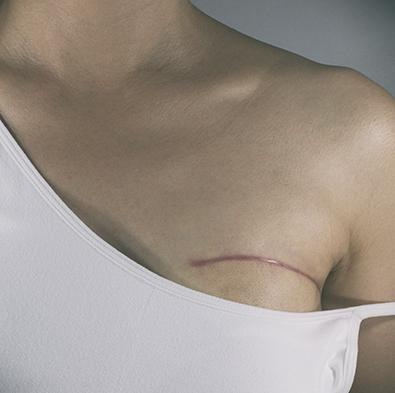Before we get into the nitty gritty of that statement, let’s talk about risk.
It’s the possibility that something bad will happen. We use it all the time to make decisions even though we don’t always think about it that way. So we say things like, what are the chances? Or if I do X, how likely is it that bad-thing Y will happen?

Risk is the possibility that something bad will happen.
Take the concrete, yet not very likely scenario (unless you like dancing outside in a thunderstorm), of getting struck by lightning. The chance of you getting struck by lightning within your lifetime is 1 in 15,300. That means, for every 15,300 times you venture out during a lightning storm, you’ll get struck once. Not bad. The odds are in your favor that you won’t get hit. If you decide to wear a suit of armor—lightening loves when you wear metal—while dancing in a thunderstorm, your risk will go up.
So what does it mean that alcohol increases your risk of breast cancer?
No matter how much alcohol or what kind of alcohol you drink, if you were born female, alcohol increases your risk of breast cancer. Full stop. No arguments. Even if you drink small amounts. And while the risk isn’t huge at small amounts, it increases the more you drink, and that risk can add up quickly. This is because the risk for breast cancer from alcohol increases by about the same amount for each drink.
The good news about this kind of relationship between alcohol use and breast cancer is that when you decrease your drinking, you’re decreasing your risk by a meaningful amount.
Lots of studies have looked at drinking and breast cancer risk, so we know, based on the data, that the increased risk is approximately 14% for each alcoholic drink per day.
This 14% risk is based on having one alcoholic drink per day (7 per week) over time—so drinking on a regular basis.
If you drink 7 drinks in one week, but then don’t drink for the next two months, your risk would be lower than someone who has 7 drinks every week. This also means that if you stick to one less drink on your regular Friday night get-together, you would be reducing your risk by 2%.
Women everywhere are at risk for developing breast cancer. For drinkers, a 14% increased risk means that your risk of developing breast cancer is 14% higher than someone who doesn’t drink.
To start, every American woman has a 12% risk of getting breast cancer, just because she’s a woman. This translates to about 1 in 8 women.
Yes, around 1 in 8 women will develop breast cancer in their lifetime. It sucks. Think about it. You probably have more than 8 female friends and family members.
So having one drink a day will increase the 12% starting risk by 14%, which will raise your personal risk to about 13.8%.
You might say “Hey, that’s only about 2% more! No worries!” But…
One drink a day increases your risk of breast cancer by about 14%.

Like we said earlier, at small amounts, like 1 drink a day, the increase in breast cancer risk isn’t huge. But it is there, and the risk increases with every drink. Between 9,000-22,000 women each year will develop breast cancer due to alcohol consumption (read study here), and that’s no small thing.
If you look at all the studies out there about alcohol and breast cancer—like in the entire world and over 30 years—you’ll see that researchers found different amounts of risk for 1 drink a day. So one study finds it’s 7% and another study almost 17%. That’s just the nature of observational science.
More than 100 studies have looked at drinking alcohol and the risk of breast cancer in women and they all found that the risk of breast cancer increases as alcohol consumption increases. No one can say with absolute certainty what the exact risk is, but we do know the range. We also know which studies are more scientifically rigorous (better) and which ones less so. It’s from the more rigorous studies and from the range of risk (10% up to almost 17%) that we arrived at 14%.
There’s less data on what happens if you drink those 7 drinks all at once, but some studies suggest that the risk might be even higher than 14% if you have five or more drinks at a time, or as it’s more commonly called, binge drink. You can read these studies here and here.
We’re going to summarize two important studies that we looked at and provide the links so you can look at them, too.
A meta-analysis (fancy term for taking a bunch of studies and combining their data into one big study) of 53 studies showed that women who drank more than 45 grams of alcohol per day (approximately 3 drinks) were 1.5 times more likely to develop breast cancer than women who didn’t drink. And the meta-analysis found that for every 10 grams of alcohol consumed every day–that’s less than one drink for we Americans (our drinks are usually 14 grams!)—there was a 7% increase in the risk of breast cancer. This translates to about a 10% risk per drink in the US. Read the study for yourself.
The Million Women Study in the United Kingdom (which included more than 28,000 women with breast cancer) found that at low and moderate drinking, every 10 grams of alcohol consumed per day, the risk of breast cancer increased by 12%. This translates to about a 17% risk per drink in the U.S. Read the study for yourself.
Alcohol is bad for you. Big yikes.
But it’s not just bad because it increases your risk of breast cancer. It also causes 7 different kinds of cancers, like mouth, throat, esophagus and colon. Yuck.
Well, the point is, drinking is something you can control. You can’t control things like being born female, or your genes, or when you got your period—all things that increase your risk of breast cancer (learn more about the risks you can’t control on our Resources page).
But you can control how much you drink. So why not control what you can?
We’re not saying give up alcohol completely, although if you do do that, we applaud you! We’re just saying, drink less for your breasts.
They’ll thank you for it.